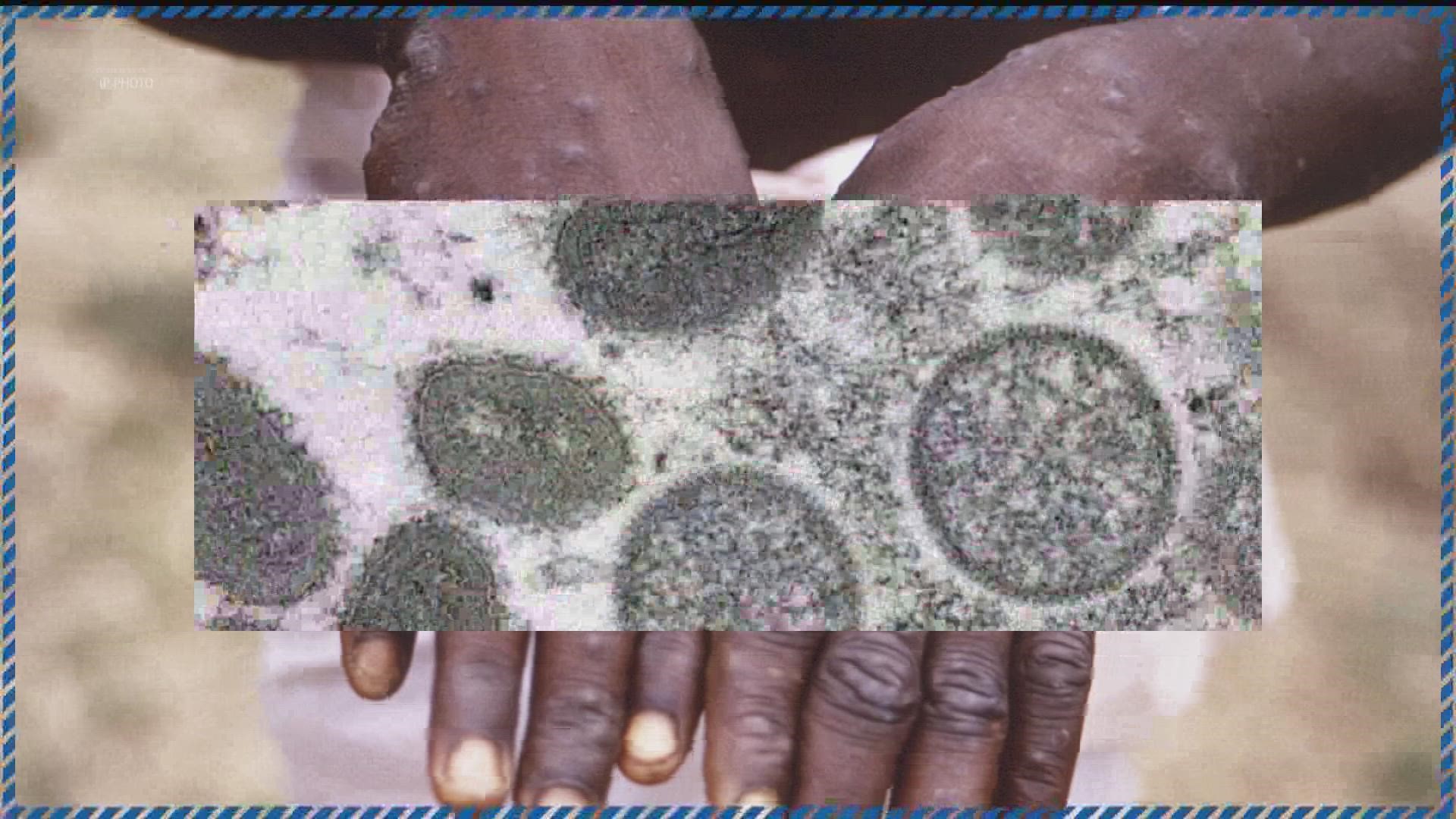MINNEAPOLIS — The first presumptive case of monkeypox has been reported in the state of Minnesota.
According to the Minnesota Department of Health, initial tests were completed Sunday and additional testing for confirmation is being done at the U.S. Centers for Disease Control and Prevention in Atlanta.
The patient has been identified as an adult male in the Twin Cities area, and was likely exposed to the monkeypox virus while traveling in Europe, MDH Commissioner Jan Malcolm said in a press conference Monday.
"The patient is now receiving outpatient care, and is recovering," Dr. Ruth Lynfield, MDH’s state epidemiologist and medical director said in Monday's press conference.
MDH is conducting contact tracing to identify anyone who might be at risk of contracting the virus because they came into close contact with the patient while they were infectious.
However, Dr. Lynfield said, “We don’t think that there is high-risk contact in Minnesota from this individual.”
“While the threat of monkeypox generally remains low, it’s important that everyone be aware of this disease so that those at risk can seek medical care and get tested promptly if they believe they have symptoms,” Malcolm said.
Malcolm added that the monkeypox virus is "less infectious than COVID-19, the flu and measles," but anyone could get the virus.
Monkeypox is less contagious than COVID-19 because, "Monkeypox is a DNA virus that mutates slowly, unlike SARS CoV-2,” which is an RNA virus, Dr. Richard Kennedy, the co-director of Mayo Clinic Vaccine Research Group, said in a media briefing Monday.
As of Friday, June 24, the CDC reported 201 cases of monkeypox in the U.S. in 26 states.
Health officials said the virus doesn't easily spread with casual contact between people, but “intimate contact, like kissing, is more likely to spread it,” according to Dr. Kennedy.
Transmission can also occur with infectious sores, body fluids and large respiratory droplets.
For the first few days, symptoms of monkeypox can include fever, headache, muscle aches and swollen lymph nodes. After that, rashes that can look like pimples or blisters will start to appear across different parts of the body.
Some people only get a rash and show no other symptoms, and sometimes the rash consists of only a few sores. The rash can occur in the mouth, and there may be sores in the genital and anal areas.
"The severity of the rash can vary," Dr. Kennedy said.
If you develop any of the above symptoms, antiviral treatment may be an option.
Currently, there are two antiviral medications that can be used, including the ACAM2000 smallpox vaccine, but are only for those "who are at risk for severe illness," Dr. Lynfield said. These people include older individuals and the immunocompromised.
People are usually sick for two to four weeks and usually get better on their own without any treatment.
If you test positive and decide to go to the emergency room, “you will be asked to incubate, or if you go home, then you will be asked to quarantine,” Dr. Kennedy said.
MDH offers these tips to slow and stop the spread of the monkeypox virus:
- Practice good hand hygiene. Wash your hands with soap and water or use an alcohol-based hand sanitizer.
- Minimize skin-to-skin contact with people who have been exposed to the virus or to those showing a rash or skin sores.
- Avoid materials directly in contact with a person who has monkeypox, like clothing or bedding.
- Contact a health care provider if you develop symptoms, as early recognition and testing can help prevent further transmission.
“Risk to the public remains low. If you are experiencing symptoms, talk to your doctor, and stay away from others,” Malcolm said.
Watch the latest local news from the Twin Cities in our YouTube playlist:

